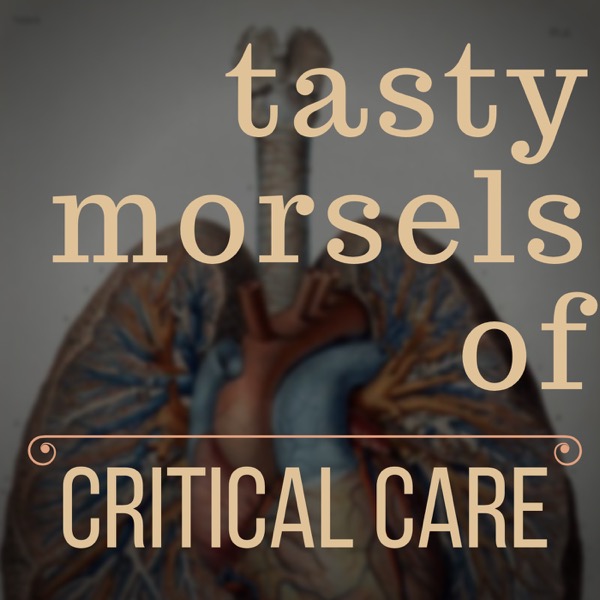Tasty Morsels of Critical Care 079 | Hyponatraemia – management
Tasty Morsels of Critical Care - A podcast by Andy Neill - Mondays

Welcome back to the tasty morsels of critical care podcast. Last time i was butchering my way through a diagnostic approach to hyponatraemia, particularly the forms likely to end up in the critical care end of the hospital. This time we’ll take a punt at how you might approach management. In an ideal world of course you would have all of the diagnostic tests back and you’ve been able to make a very solid diagnosis of the cause of hyponatraemia and you would institute a bespoke treatment course for the underlying disease and the resultant hyponatraemia. But as we all know in critical care we often work with less than ideal information and have to begin treatment while the diagnostic process is ongoing. Hopefully what follows will provide enough broad brush strokes to get you through a night on call or even worse a viva. We’ll start with truly emergent situations. Older person presents to the ED after being unwell for several weeks. They have a seizure on arrival and a Na comes back at 105. This is a fairly solid indication to give hypertonic saline. In this scenario they are seizing because of the low Na and rapid increase of the Na is needed to stop the seizure. The European Hyponatraemia Guidelines would suggest 150mls of 3% saline over 20 mins aiming for a rise in the Na of 5mmol/L. This bit is usually pretty straightforward. The sodium rises, the patient stops seizing everyone relaxes but then the Na continues to rise, well above the 5mmol we wanted and a panic ensues. The guidelines suggest a max rise of 10mmol in the first 24 hrs and 8 mmol/day after that. It is hard to overemphasise how easy it is to blow past that target unless you are paying attention. So how do you control the rise in the Na? If it’s rising too quick it’s often because the patient is losing lots of water through the kidneys which concentrates the plasma raising the Na in the blood. You can replace that water loss by giving a decent bolus of free water in the form of something like 5% dextrose. An alternative method involves using the wonderfully named DDAVP clamp. In this scenario you’re using the DDAVP to tell the kidneys to excrete less water therefore limiting the rise of the Na. I have not seen particularly strong data on one method vs the other for limiting the rise and indeed I have seen clinicians use either or indeed both to good effect. The European guidelines do use the phrase “severe symptoms” as an indication for a bolus of hypertonic. Unfortunately it’s a little less clear what constitutes severe symptoms. A seizure seems fairly easy to define but “coma” is a little bit more vague. The guidelines are clear that you have to be able to put the symptoms down to the hyponatraemia and not some other cause. But as we all know patients often have multiple reasons to be obtunded including sepsis or intoxication or multiple other causes. As such the decision to give hypertonic can be a little subjective and fudgeable. For many patients the best thing you can do is very little. A former consultant I worked for had somewhat facetious plans to start a hyponatraemia clinic that involved locking the patient in a room and denying them access to water and letting the body sort it out over several days. There is an element of truth to that as for many of the hyponatraemics simple fluid restriction and time will correct things. Lastly, our hypertonic of choice is typically 3% saline with an osmolality somewhere in the range of 1000 or so. Typically we’re a bit reticent to give such concentrated solutions through a peripheral IV but there are a few papers suggesting that this is fine at least on a limited basis. I will say that once the hypertonic is in and you’re reaching for a 2nd or a 3rd you should probably be thinking about a CVC as the access for administration and in...
